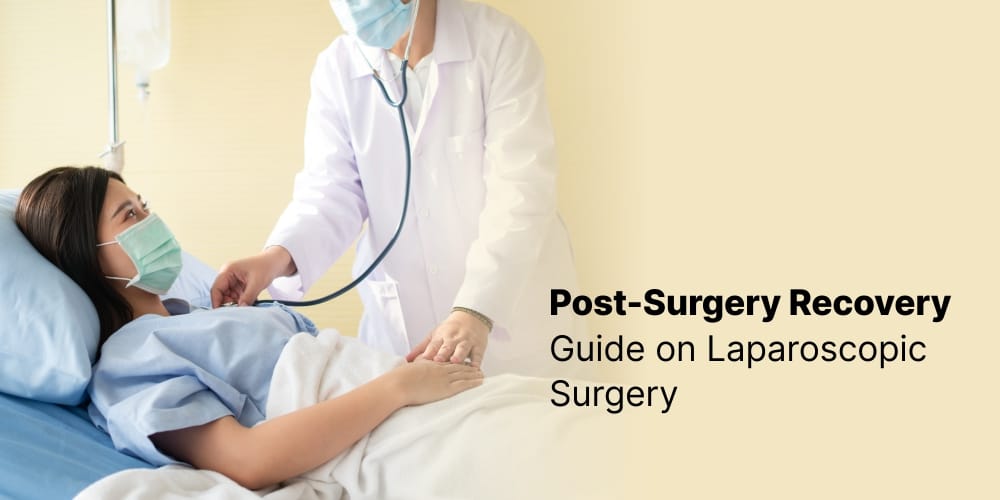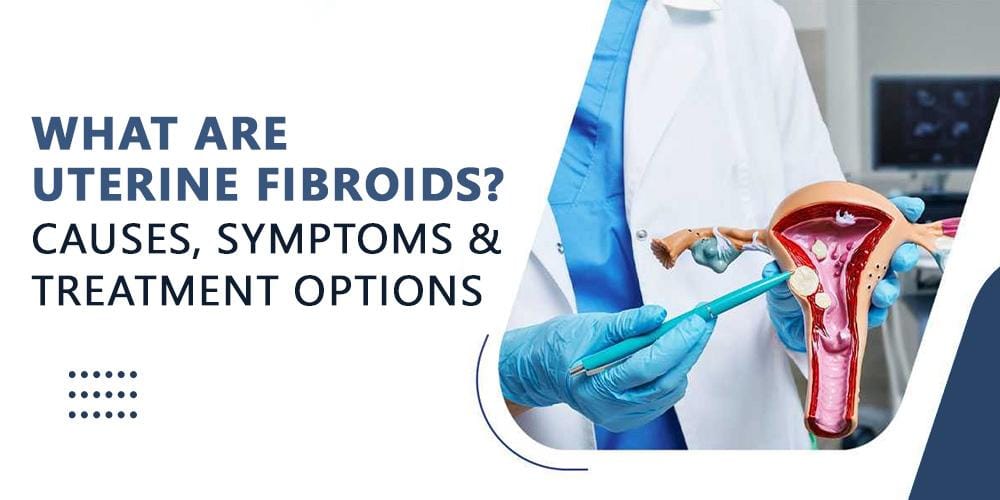Laparoscopic surgery is an advanced medical technology with smaller incisions, less pain, and a faster return to daily activities compared to traditional open surgery.
Still, many patients wonder, “What exactly should I do after my laparoscopic surgery?”, rather than “what is laparoscopic surgery?”, and equally important, “What should I not do?” Let’s break down the essential guidelines to help you navigate your recovery with confidence from the best laparoscopic surgeon.
A Refresher on Laparoscopic Surgery
The best laparoscopic surgeon will make incisions of 0.5 to 1.5 centimeters in length, rather than a single large one. Through these small cuts, a surgeon inserts a thin, lighted tube with a camera (laparoscope) and specialized surgical instruments. Then, carbon dioxide is introduced to get a clear view of the organs and their conditions. This is how laparoscopic surgery is done by the experts. The benefits of this technique are significant: reduced blood loss, smaller scars, less post-operative pain, and a generally faster recovery period.
The First 24-48 Hours After Laparoscopic Surgery
These are crucial hours, so during this window, you should explicitly follow the restrictions of the best laparoscopic surgeon. In case you want to clarify something, you can ask the doctor. State the intensity of post-operative pain. Although this surgery is less painful, you might still feel some discomfort.
Your digestive system would be weakened, so begin your diet with clear liquids. Once your body adjusts, we will introduce easy-to-consume foods. If possible, move your toes to improve blood circulation and prevent the formation of blood clots.
What you SHOULDN’T do:
- Rush to Consume Heavy Meals: Your digestive system needs time to “wake up” after anesthesia. Avoid rich, greasy, or spicy foods initially. Stick to the light diet recommended by your healthcare provider.
- Ignore or Understate Your Pain: If your pain is not adequately managed, inform your nurse or doctor. There’s no need to suffer in silence, and uncontrolled pain can hinder your recovery.
- Attempt to Get Up Without Assistance: You might feel dizzy, lightheaded, or unsteady on your feet after anesthesia. Always ask for assistance from a nurse or family member the first few times you get out of bed.
- Suppress a Cough or Sneeze: If you feel the urge to cough or sneeze, try to support your abdomen by holding a pillow firmly against your incisions. This reduces strain on the surgical sites.
If you still have the question, “Is laparoscopic surgery safe?”, I would say, yes, it is, but listen to what doctors are telling you.
The First Week: Advice from a Laparoscopic Surgeon
What you SHOULD do:
- Continue Pain Management: Keep taking your prescribed pain medications as needed. You’ll likely find you need them less frequently as the days pass.
- Adhere to Dietary Recommendations: Stick to light, easily digestible foods for the first few days. Think bland, cooked foods like soft grains, lean proteins, and cooked vegetables. Gradually reintroduce other foods as you feel comfortable.
- Stay Well-Hydrated: Drink plenty of water throughout the day. Adequate hydration aids in bowel function, helps flush out toxins, and supports overall healing.
- Practice Proper Wound Care: Keep your incision sites clean and dry. Your doctor or nurse will provide specific instructions on when and how to shower, and whether any dressings need to be changed. Report any signs of infection immediately.
- Engage in Gentle Walking: This is one of the best things you can do for your recovery. Start with short walks around your home several times a day. Gradually increase the distance and duration as your stamina improves. Walking helps prevent blood clots, reduces gas pain, and promotes healthy bowel function.
- Prioritize Rest: Listen to your body’s signals. You will likely feel tired easily, even after minimal activity. Allow yourself plenty of rest and naps as needed. Pushing yourself too hard can delay healing.
- Monitor for Complications: Be vigilant for any signs of complications, such as fever, increasing redness, swelling, warmth, or discharge from incision sites, persistent nausea or vomiting, severe abdominal pain, or any new or worsening symptoms. Contact your doctor immediately if you notice any of these.
What you SHOULDN’T do:
- Lift Heavy Objects: This is crucial to prevent strain on your abdominal muscles and incisions, which could lead to a hernia. Avoid lifting anything heavier than a small bag of groceries for several weeks, as advised by your surgeon.
- Engage in Strenuous Activities: Refrain from vigorous exercise, running, heavy household chores, or any activity that puts significant strain on your core muscles.
- Take Long, Bumpy Car Rides: These can be uncomfortable and cause jarring movements that might irritate your incisions.
- Wear Tight Clothing: Opt for loose, comfortable clothing that doesn’t put any pressure on your abdomen or incision sites.
- Self-Medicate with Unprescribed Remedies: Only take medications that have been prescribed or approved by your doctor. Avoid using unverified remedies that could interfere with your healing or prescribed medications.
- Strain During Bowel Movements: Constipation is a common side effect of surgery and pain medication. If you’re struggling, discuss stool softeners with your doctor. Avoid straining, as this puts undue pressure on your healing incisions.
Long-Term Recovery: Weeks 2-6
By this stage, you should be feeling significantly better and regaining much of your energy. However, it’s important to continue a cautious approach to ensure complete healing.
What you SHOULD do:
- Gradually Increase Physical Activity: As your strength returns, slowly reintroduce more activities. Your doctor will advise you on when it’s safe to resume more vigorous workouts or sports.
- Return to a Normal Diet: You may have confusion about “what to eat after laparoscopic surgery?” As per an expert, you can gradually reintroduce your regular diet. Pay attention to how your body reacts to different foods; some people find certain foods, especially rich or fatty ones, take a bit longer to tolerate well.
- Consider Scar Care: Once your incisions are fully closed and dry, you can gently massage the area with a plain, unscented moisturizer or as advised by your doctor. This can help improve the appearance and flexibility of the scar tissue.
- Attend All Follow-Up Appointments: These appointments are essential for your surgeon to assess your healing progress, remove any remaining sutures or staples, and provide personalized advice on your return to full activities, including work.
What you SHOULDN’T do:
- Rush Back to Full Activity Too Soon: Even if you feel great, internal healing takes time. Pushing your body too hard, too fast, can lead to setbacks or complications.
- Ignore Persistent Pain or Discomfort: While some mild, occasional discomfort is normal during recovery, increasing pain, new pain, or pain that doesn’t respond to medication should be reported to your doctor.
- Neglect Your Mental Well-being: Surgery and recovery can be physically and emotionally taxing. If you find yourself feeling unusually low, anxious, or overwhelmed, talk to a trusted family member, friend, or your healthcare provider.
Laparoscopic surgery is a remarkable technique that significantly reduces recovery time compared to older methods. However, your active participation and adherence to post-operative guidelines are paramount for a smooth and successful outcome. If you ever wonder about the laparoscopic surgery cost, you must consult a gynecologist and your insurance provider.
Dr. Pankhuri Gautam has been dealing with complicated infertility-related cases and providing patient-specific treatments. She has treated patients with fibroids, polyps, endometriosis, and other concerns.
What are the main benefits of choosing laparoscopic surgery over open surgery?
- Less Pain: Smaller incisions mean less muscle and tissue damage, resulting in less post-operative pain.
- Faster Recovery: Many patients can return home sooner and resume normal activities more quickly.
- Smaller Scars: The tiny incisions leave behind much less noticeable scars.
- Reduced Blood Loss: The precise nature of the surgery often leads to less bleeding.
- Lower Risk of Infection: Smaller wounds are generally less prone to infection.
Does laparoscopic surgery come with major risks?
Potential risks include bleeding, infection, injury to nearby organs, or complications related to anesthesia. However, serious complications are rare. We thoroughly evaluate your overall health and the specifics of your condition to determine if this is the safest and most effective option for you.
What kind of pain can I expect after the surgery, and how will it be managed?
You will experience some pain, but it’s usually less severe than after open surgery. The pain will primarily be at the incision sites. Your pain will be managed with prescribed pain medications, which you’ll receive while in the hospital, and be given instructions for at home.
How quickly can I return to my normal activities, like work or exercise?
Most patients can return to light activities and desk work within a few days to a week. Strenuous activities, heavy lifting, and vigorous exercise usually need to be avoided for about two to six weeks, depending on the specific surgery and your healing progress.
What should I eat after the surgery? Are there any foods I should avoid?
Initially, you’ll start with clear liquids, then progress to soft, bland foods that are easy to digest. Gradually, you can reintroduce your normal diet. It’s best to avoid very spicy, oily, or gas-producing foods (like beans or certain cruciferous vegetables) in the first few days, as these can cause discomfort.






